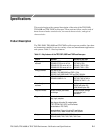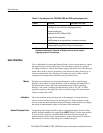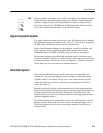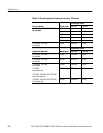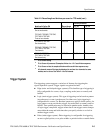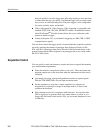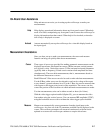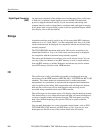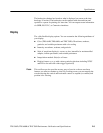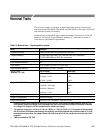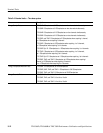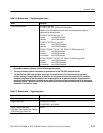
Specifications
2–6
TDS 500D, TDS 600B & TDS 700D Performance Verification and Specifications
that you specify. It can also trigger on a pulse edge that has a slew rate faster
or slower than the rate you specify. The timeout trigger will act when events
do not occur in a defined time period. The pulse trigger is also configurable
for source, polarity, mode, and holdoff.
H Video (with option 05: Video Trigger): Video triggering is compatible with
standard NTSC, PAL, SECAM, and HDTV formats. An additional feature
called FlexFormat
TM
(flexible format) allows the user to define the video
format on which to trigger.
H Comm (with option 2C): is provided for triggering on AMI, CMI, or NRZ
communications signals.
You can choose where the trigger point is located within the acquired waveform
record by selecting the amount of pretrigger data displayed. Presets of 10%,
50%, and 90% of pretrigger data can be selected in the horizontal menu, or the
general purpose knob can be assigned to set pretrigger data to any value within
the 0% to 100% limits.
Acquisition Control
You can specify a mode and manner to acquire and process signals that matches
your measurement requirements.
H Select the mode for interpolation (linear or sin (x)/x). This can increase the
apparent sample rate on the waveform when the maximum real-time rate is
exceeded.
H Use sample, envelope, average and peak detect modes to acquire signals.
With the TDS 500D/700D, also use high-resolution mode.
H Set the acquisition to stop after a single acquisition (or sequence of
acquisitions if acquiring in average or envelope modes) or after a limit
condition has been met.
H Select channel sources for compliance with limit tests. You can direct the
TDS to signal you or generate hard copy output either to a printer or to a
floppy-disk file based on the results. Also, you can create templates for use
in limit tests.






